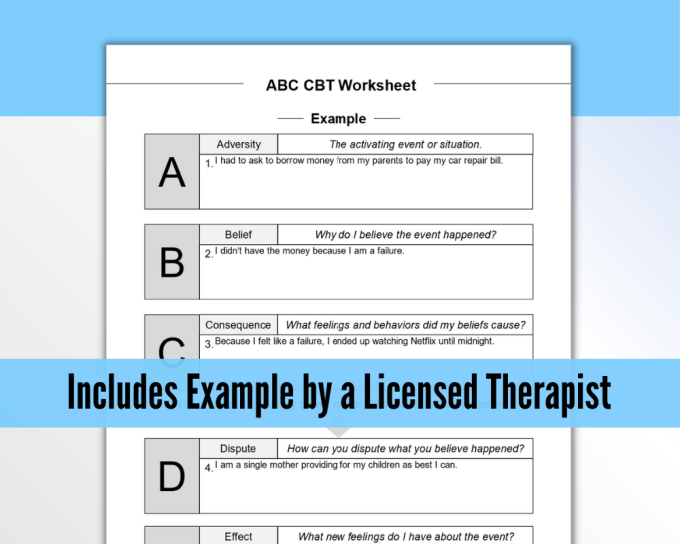Cognitive Behavioral Therapy (CBT) is a widely-used therapeutic approach that focuses on identifying and changing negative thought patterns and behaviors. The ABC Model is a key component of CBT, helping individuals understand the connection between their thoughts, emotions, and actions.
The ABC Model stands for “Antecedent, Belief, Consequence.” It suggests that our beliefs or interpretations about an event (B) directly influence our emotional and behavioral reactions (C), rather than the event itself (A). By identifying and challenging negative beliefs, individuals can change their emotional and behavioral responses.
How to Use a Printable ABC Model Worksheet
A Printable ABC Model Worksheet is a helpful tool for individuals to practice using the ABC Model in their daily lives. This worksheet typically includes sections to write down the Antecedent (the triggering event), the Belief (the thoughts or interpretations about the event), and the Consequence (the emotional or behavioral reaction).
To use the worksheet effectively, individuals can start by identifying a specific triggering event that caused a negative emotional or behavioral reaction. They can then write down their thoughts or beliefs about the event, followed by the emotional or behavioral consequence they experienced. Finally, individuals can challenge their beliefs by considering alternative interpretations or perspectives.
Benefits of Using a Printable ABC Model Worksheet
Using a Printable ABC Model Worksheet can help individuals develop greater self-awareness and insight into their thought patterns and behaviors. By consistently practicing the ABC Model, individuals can learn to identify and challenge negative beliefs, leading to more positive emotional and behavioral responses. This tool can also enhance communication skills and problem-solving abilities, ultimately improving overall mental well-being.
Overall, a Printable ABC Model Worksheet is a valuable resource for anyone looking to enhance their emotional intelligence, change negative thought patterns, and improve their overall quality of life through cognitive behavioral therapy techniques.

